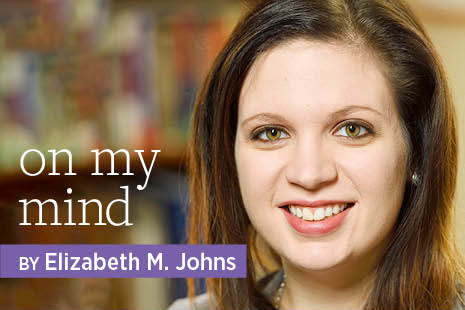
This fall semester will look and feel different for academic librarians on campuses across the country. Summertime conversations that used to focus on fall event planning or new interactive exhibits have been replaced with discussions of which chairs are moving to storage and whether we have enough plexiglass to protect the help desk.
My information literacy classes, like so many others, have largely shifted to video chat platforms. It was a difficult, abrupt switch, even for those of us who have taught online for years. As online learning librarians know, a lesson designed for a physical classroom cannot easily move to an online space but requires transformation for its new environment.
I know what I am teaching and why it’s important, but our teaching approaches changed almost overnight. Students initially struggled with this new way of learning during the COVID-19 pandemic. I could see and hear their frustrations as they were forced into a learning environment that they did not choose or enjoy.
To help me understand my students’ reluctance, I turned to Universal Design for Learning (UDL), a framework for teaching with the goal of developing expert learners who are purposeful, motivated, resourceful, and strategic. It offers graduated levels of guidelines to help educators design learning that provides multiple means of representation, engagement, and action and expression—or what educators should consider the principles of what, why, and how students learn.
The answers to those questions have changed seismically over the last several months. The pandemic has forced instructors and students alike to confront profound issues of persistence and self-regulation and to find new ways to cope with the struggle.
Universal Design for Learning isn’t a simple checklist or the sole solution to a complex set of challenges.
I have integrated UDL into my practice in the past, tending to focus on the first level of the why of learning—recruiting interest—with first-year students. The pandemic has forced me to take it further. I asked my students to self-assess their work and set their own deadlines. I held space in class for more intentional group reflection, focusing on ways to build connections between the content and their lives. We all need that space to refocus, and it remains crucial as the fall semester begins.
UDL isn’t a simple checklist or the sole solution to a complex set of challenges. Rather, it supports a nuanced approach to learning, one that encompasses accessibility, inclusion, and cultural awareness.
What does this look like for educators? We must ask ourselves, for example: When we attempt to activate or supply background knowledge, are we merely acknowledging diverse experiences and circumstances or are we respecting and amplifying a diverse range of voices?
Conversations around these questions can be facilitated by the UDL Graphic Organizer and other resources on the website of the Center for Applied Special Technology, the organization that developed the framework. Kendra Grant and Luis Perez’s 2018 Dive into UDL workbook can help you practice. As more classes, programs, and outreach shift online, the International Society for Technology in Education Standards for Educators can serve as a complementary resource to UDL.
These are anxious times for everyone, particularly students from historically marginalized communities. But we can be proactive in our efforts to support students. We can refocus on how and why students learn. For me, that process involves a UDL approach and a critical pedagogy lens.
As academic librarians, we often pride ourselves on our student-centered approach to teaching and learning. The ongoing pandemic-related challenges of the present moment offer an excellent opportunity to model that practice.


